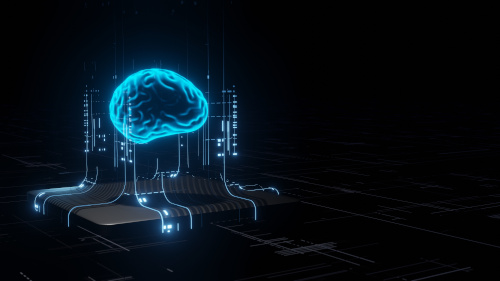When some people hear the term “artificial intelligence,” they think of robots like the ones in the Steven Spielberg movie AI. In education today, AI is something less glamorous.
As a tool among others in the software developer’s toolbox, it is used under the hood in many services and applications that teachers and students use every day in schools and families rely on at home. For example, it enables natural-language processing (search engines, speech recognition, spell checking), social media (interest profiling, sentiment analysis, add targeting), and computer vision (object detection, face recognition, augmented reality).
Despite its many uses, AI has raised some concerns among parents and teachers. According to the report “AI and the Future of Learning” from the Center for Integrative Research in Computing and Learning Sciences, three of those worries are students’ privacy, the potential for bias, and the possibility of teachers losing their jobs to AI.
Some concerns about privacy are legitimate. AI solutions rely on data and work with data. It is important that service providers are transparent about how they safeguard privacy and stay updated on current legislation and best practices. On the other hand, concerns about AI replacing teachers are unjustified. AI lacks the human touch. It can’t express feelings, it doesn’t dream, it doesn’t aspire, and it will never be able to support a young, inquisitive mind the way a real teacher does. But it can aid teachers—and even give them superpowers.
Experiments in eye-tracking
My experience with AI started when I did my PhD on how to make it easier to read on mobile devices. We used eye tracking to evaluate different presentation formats. When I was done with my PhD, I did a post-doc at a children’s hospital in Stockholm, working with different aspects of eye tracking. Dyslexia was also something I was interested in trying to understand better.
Then Mattias Nilsson Benfatto, my co-founder, came to our lab as a postdoc, and he had been working with modelling of eye movements using machine learning. We started to consider whether we could make good predictions about which children would later have reading difficulties based on short recordings using eye tracking.
This kind of AI uses something called supervised machine learning, which is essentially learning by example. This requires quite a lot of data and you need to have some idea of the outcomes, but then you can train a model that will look at new data with a high reliability and provide relevant results.
Helping teachers, parents, and students
In this case, AI helps teachers by replacing other, more labor-intensive reading assessments so they can spend more time giving instruction. Because everyone’s eyes move when they read, it is more objective than other forms of assessment, which I think addresses the concerns about the potential for bias when using AI. This sort of assessment is, in fact, more precise.
We recommend that teachers use an eye-tracking tool three times a year for all students–not just those with difficulties. That way, they can identify kids who might have dyslexia, but also support more advanced readers who might need more stimulation.
Once teachers have the results, the next step is up to them. Supervised machine learning is not replacing a teacher or a special educator, but rather giving them support for their decisions and an objective basis for their conversations with parents.
Because supervised machine learning gathers a great deal of data, it can provide instructive context for those discussions. Comparing a student with peers in their class, school, and district can provide parents with a better overall understanding of their child’s reading ability.
Looking to the future
In the next few years, I believe AI will be able to support teachers to give children a more personalized and efficient trajectory towards their goals. AI has the potential to learn from the outcomes of large numbers of students as well as the activities of many teachers—across schools, districts, and even countries. It may be able to suggest interventions or lessons that are more likely to work for a student where they are right now, or it could just make educators aware that they need to come up with something to move the needle.
From there, it is up to teachers, parents, and students to collaborate on creating and implementing an effective learning plan.
- The evolving requirements of a K-12 school network - April 24, 2024
- A bungled FAFSA rollout threatens students’ college ambitions - April 24, 2024
- How digital tools and AI can enhance social studies - April 23, 2024

